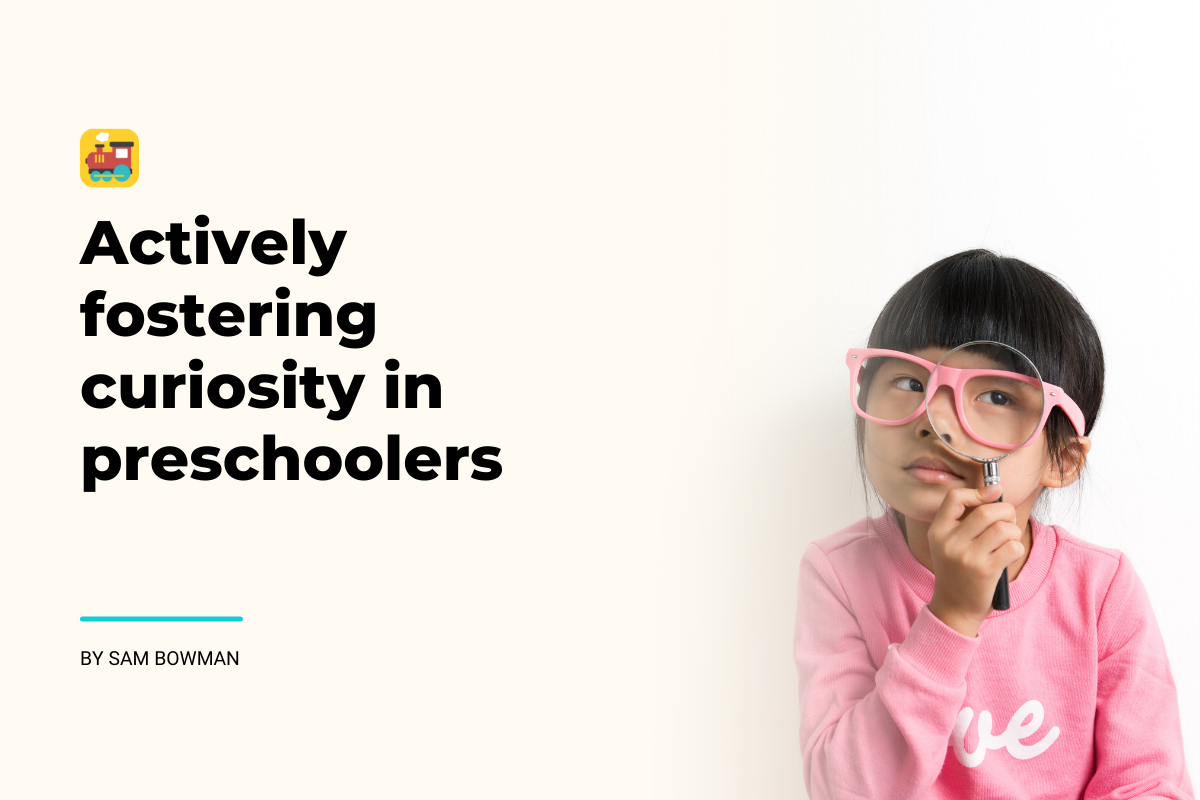Children are naturally curious. There’s so much to see, learn, and experience in this great big world! However, that natural curiosity can fade over time through the rigors of school, life, and the modern education system.
Unfortunately, by the time some children are preschool age, their natural instinct to be curious and explorative has diminished significantly.
Being curious is important for establishing lifelong learning habits, and it’s essential for those habits to be instilled now. As an early childhood educator, you can do your part to actively foster curiosity in preschoolers.
Let’s look at what you can do to boost curiosity in the classroom and how to avoid behaviors that might inadvertently stall it.
Set an example
It might not always seem like young children are listening to you, but they are. They’re watching everything you do and will mimic you more than you might realize. One of the best things you can do is to set a positive example for curiosity by being a model of it yourself.
Allow children in your class free time to play. Give them choices when it comes to exploring and discovering things on their own, and get involved in those activities. Play with them. Discover things on your own and bring those discoveries to their attention. Help them name things they see and experience and show excitement whenever they discover something new.

You can even set a positive example during more structured learning times.
For example, try to incorporate the five senses into your lessons. Instead of teaching children about taste and smell in the abstract, bring in a tasty treat for them to eat and have them describe what it tastes like. Exercises like these will encourage children to want to know more about something as simple as their food. It instills a sense of curiosity that they can take with them whenever they’re met with something new and unfamiliar.
Encourage question time in everything you teach, as well. You never know what interesting discussions you might have, or how one child’s question (or your answer) could spark more curiosity in another.
Spend time outside
Children are using digital devices at an earlier age than ever. One study found that 46% of children under the age of two have had at least some experience with a touchscreen device. There’s nothing wrong with children using tablets or phones — they can be educational, stimulating, and fun!
However, too much screen time can have drawbacks for young minds. Some of the potential risks include:
- Obesity
- Back and neck pain
- Anxiety
- Depression
- Poor sleep problems

One of the best ways to combat so much screen time, or even time just “sitting” in a classroom, is to get outside. Nature is a natural mental health booster, and a fantastic way to foster curiosity in children.
Again, free play is one of the easiest options for getting children interested in exploring. Go on a nature hike with your class and have them point out anything they find interesting to discuss. If you want to try something more structured, invest in a metal detector for your classroom. Children will love searching for buried treasure, and who wouldn’t be curious about whatever goodies you might dig up? It can serve as a great way to incorporate both science and history lessons into their day.
Make sure you’re not stifling curiosity
Early learning and development are essential. Preschool needs to be about more than just “playing” all day. However, some educators and schools make too many demands on children from a very early age.
It’s important to make sure your practices aren’t causing children to become averse to learning because of stress. Nothing will kill curiosity faster than a stressed-out, overworked mind.

While having structured lesson plans for your preschool class is never a bad thing, make sure that plan includes different de-stressing techniques for children. When they learn stress management at an early age, they can take those skills with them as they grow, and have a better time managing stress and emotions even as adults. Some of the best stress management techniques for preschoolers include:
- Making sure they’re getting enough sleep
- Encouraging healthy eating
- Exercising
- Making time for fun
- Teaching mindfulness and meditation
Work with parents to make sure you’re on the same page about stress management techniques. A united front will make it easier for preschoolers to unwind and relax at home and at school.
How curious each child is will vary, even when they’re very young. Sometimes giving them a little encouragement and finding ways to spark their curiosity is exactly what they need to explore, learn, and grow while having fun. Take some of the pressure off of them, and yourself, and let kids be kids! There’s no better way to create lifelong learners.


